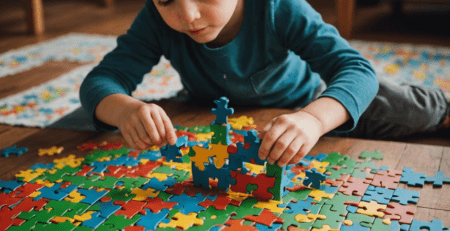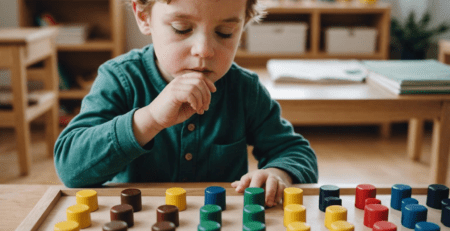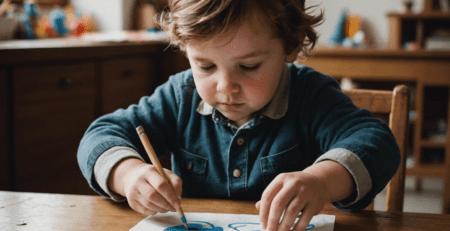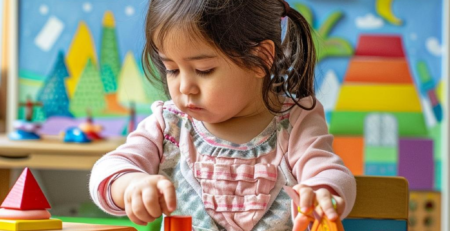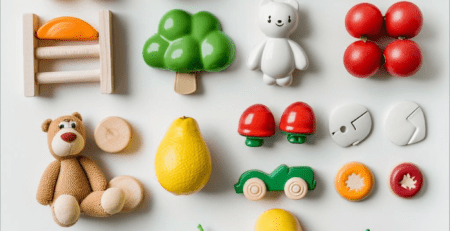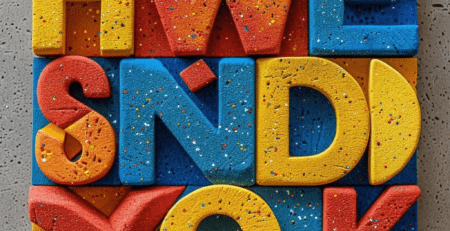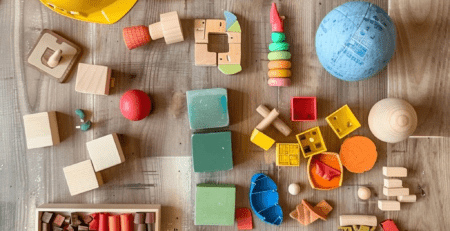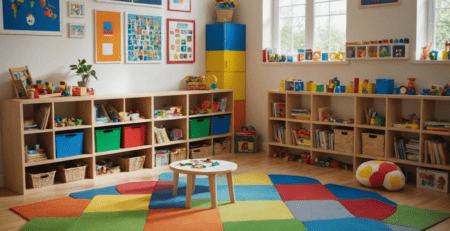
13
Happy Tots: Fun Music & Movement Activities for Toddlers
As parents, we are always striving to provide the best experiences for our toddlers. Music and movement activities offer a unique and engaging way for our little ones to explore the world around them. Not only do these activities promote physical development and coordination, but they also foster creativity and self-expression. In this article, we will explore the benefits of music and movement for toddlers, as well as provide a variety of fun and educational activities to try with your little one. So put on your dancing shoes and get ready to groove with your toddler!
Table of Contents
- Introduction
- Benefits of Music and Movement for Toddlers
- Ideas for Music and Movement Activities
- Tips for Incorporating Music and Movement into Daily Routines
- Choosing the Right Music for Toddlers
- Safety Precautions for Music and Movement Activities
- Q&A
- In Retrospect
Introduction
Music and movement activities are an excellent way to engage toddlers in fun and interactive experiences that promote their physical, cognitive, and emotional development. Toddlers are naturally drawn to rhythm and movement, and incorporating music into their daily routines can have a profound impact on their overall development.
Whether it’s dancing to their favorite songs, playing with simple musical instruments, or engaging in interactive games, music and movement activities can help toddlers develop their motor skills, coordination, and language abilities. Additionally, these activities provide an opportunity for toddlers to express themselves creatively and build their confidence in a supportive and encouraging environment.
By incorporating music and movement into a toddler’s daily routine, parents and caregivers can create a positive and stimulating atmosphere that fosters their child’s growth and development. In this guide, we will explore a variety of music and movement activities that are specifically designed to captivate the attention of toddlers and provide them with enriching, engaging experiences.
Benefits of Music and Movement for Toddlers
Engaging in music and movement activities can have a myriad of benefits for toddlers. Not only are these activities fun, but they also play a crucial role in the overall development of a child. Here are some of the key :
1. Cognitive Development
Music and movement help in the cognitive development of toddlers. When they move to the rhythm of the music, it stimulates their brains and enhances their ability to think, reason, and solve problems. Furthermore, music helps in the development of language and communication skills.
2. Physical Development
Engaging in movement activities such as dancing, jumping, and clapping helps toddlers to develop their gross motor skills. It also improves their balance, coordination, and strength. Overall, it contributes to their physical well-being and lays the foundation for a healthy lifestyle.
3. Social and Emotional Development
Music and movement activities provide toddlers with the opportunity to interact with their peers, fostering social skills such as sharing, turn-taking, and cooperation. It also helps in expressing emotions and encourages self-confidence and self-expression.
4. Sensory Stimulation
Music and movement engage all the senses of a toddler, including sight, sound, touch, and even taste (for example, through musical instruments). This sensory stimulation is essential for their overall development and helps in creating a holistic learning experience.
Overall, music and movement activities are not only enjoyable for toddlers, but they also contribute to their holistic development, making them an essential part of early childhood education.
Ideas for Music and Movement Activities
When it comes to keeping toddlers engaged and active, music and movement activities are a fantastic way to promote physical development and cognitive skills. Whether you’re a parent, teacher, or caregiver, incorporating music and movement into the daily routine can have a positive impact on a child’s overall development. Here are some fun and creative that toddlers will love:
- Dance Party: Crank up the music and let the little ones dance and move to the beat. Encourage them to express themselves through movement, whether it’s twirling, jumping, or stomping. This activity not only gets them moving but also allows them to release energy and express themselves creatively.
- Musical Statues: Play some lively music and have the children dance around. When the music stops, they have to freeze in whatever position they’re in. This game helps develop listening skills and teaches them to control their movements.
- Instrument Exploration: Set up a variety of child-friendly instruments such as drums, shakers, and bells, and let the toddlers explore and make music. This activity enhances fine motor skills and introduces them to different sounds and rhythms.
These are just a few examples of music and movement activities that are not only enjoyable but also beneficial for toddlers’ development. By incorporating these activities into their routine, you can help them develop coordination, rhythm, and a love for music from an early age.
Tips for Incorporating Music and Movement into Daily Routines
Music and movement are essential for the overall development of toddlers. Incorporating these activities into their daily routines can have numerous benefits, including improved motor skills, cognitive development, and emotional regulation. Here are some creative tips for integrating music and movement into your toddler’s daily schedule:
1. Dance parties
Host spontaneous dance parties with your toddler to their favorite songs. Encourage them to move and groove to the music, allowing them to express themselves through movement. This activity not only promotes physical activity but also helps with coordination and rhythm development.
2. Musical instrument exploration
Introduce your toddler to various musical instruments such as drums, shakers, and xylophones. Allow them to explore the different sounds and textures, helping them develop an appreciation for music and enhancing their sensory skills. Creating a mini music band with household items can be a fun and engaging activity for both you and your toddler.
3. Sensory play with music
Create sensory bins filled with items that make different sounds, such as rice, beans, or bells. Play different types of music and encourage your toddler to explore the sensory materials while listening to the music. This activity not only stimulates their auditory and tactile senses but also promotes creativity and imagination.
4. Incorporate music into daily routines
Add music to everyday activities such as mealtime, bath time, or playtime. Choosing specific songs for each routine can help create a sense of structure and predictability for your toddler. For example, playing calming music during bath time can help soothe and relax your child, making the experience more enjoyable for both of you.
By incorporating music and movement into your toddler’s daily routines, you can provide them with a holistic and enriching environment that supports their overall development. These tips offer creative and fun ways to integrate music and movement into their daily lives, promoting physical, cognitive, and emotional growth.
Choosing the Right Music for Toddlers
When it comes to choosing the right music for toddlers, it’s important to consider their developmental stage and needs. Music can have a significant impact on a child’s cognitive, emotional, and social development. With that in mind, here are a few tips to help you select the best music for your little one.
1. Consider the tempo and rhythm: Toddlers are naturally drawn to music with a lively beat and catchy rhythm. Look for songs with a moderate to fast tempo that will encourage your toddler to move and groove. Simple, repetitive melodies and rhythms are also great for engaging young children.
2. Choose age-appropriate lyrics: Toddlers are at an age where they are absorbing language at a rapid pace. Opt for songs with simple and clear lyrics that are easy for them to understand and sing along to. Avoid songs with complex vocabulary or themes that may be too mature for them.
3. Expose them to a variety of genres: Introducing your toddler to different styles of music can help broaden their musical palette and stimulate their auditory senses. From classical to jazz to folk, there’s a wide range of genres that can enrich your toddler’s musical experience.
| Genre | Description |
|---|---|
| Classical | Introduce your toddler to the soothing sounds of composers like Mozart and Beethoven. |
| Folk | Explore traditional songs and melodies from different cultures around the world. |
| Jazz | Expose your toddler to the improvisational and rhythmic elements of jazz music. |
By considering these factors and exposing your toddler to a variety of music, you can create an enriching and enjoyable musical environment for them. Remember to also join in the fun by dancing and singing along with your little one!
Safety Precautions for Music and Movement Activities
When planning music and movement activities for toddlers, it is important to keep their safety in mind. Toddlers are naturally curious and full of energy, so it’s crucial to create a safe environment for them to explore and enjoy the activities without any risks of injuries. Here are some safety precautions to consider when organizing music and movement activities for toddlers:
- Supervision: Always have adult supervision during music and movement activities to ensure the safety of the toddlers and prevent any accidents.
- Clean and Clear Space: Ensure that the play area is free from any hazards such as sharp objects, furniture with sharp corners, or small items that toddlers could choke on.
- Age-Appropriate Activities: Choose music and movement activities that are suitable for the age and development of the toddlers to avoid any potential risks.
- Proper Equipment: Use age-appropriate and safe musical instruments and props, ensuring that they are in good condition and do not pose any risks to the toddlers.
By following these safety precautions, you can create a safe and enjoyable environment for toddlers to explore and engage in music and movement activities.
Q&A
Q: What are the benefits of music and movement activities for toddlers?
A: Music and movement activities for toddlers offer a range of benefits including promoting physical development, coordination, cognitive development, socialization, language development, and emotional expression.
Q: How can parents incorporate music and movement activities into their daily routine with toddlers?
A: Parents can incorporate music and movement activities into their daily routine with toddlers by singing songs, dancing together, playing musical instruments, and incorporating music into activities such as circle time, story time, and outdoor play.
Q: What are some age-appropriate music and movement activities for toddlers?
A: Age-appropriate music and movement activities for toddlers may include simple dance routines, playing with scarves or ribbons to music, marching to a beat, clapping hands or playing rhythm instruments, and engaging in interactive music and movement games.
Q: What are some recommended resources for incorporating music and movement activities into a toddler’s day?
A: Recommended resources for incorporating music and movement activities into a toddler’s day may include children’s music CDs, musical toys such as shakers and bells, dance videos or DVDs, and books with interactive sound elements.
Q: How can music and movement activities support language development in toddlers?
A: Music and movement activities can support language development in toddlers by exposing them to different types of sounds, rhythms, and patterns, which can help to expand their vocabulary and improve their ability to communicate and express themselves.
Q: What are some tips for creating a positive and engaging music and movement environment for toddlers?
A: Some tips for creating a positive and engaging music and movement environment for toddlers include using a variety of music styles and genres, encouraging participation and exploration, providing age-appropriate props and instruments, and modeling enthusiasm and enjoyment for music and movement.
In Retrospect
In conclusion, music and movement activities have been shown to have numerous benefits for toddlers, including promoting physical development, enhancing cognitive skills, and fostering social interaction. Through simple and enjoyable activities like dancing, singing, and playing with musical instruments, toddlers can explore their creativity and express themselves in a meaningful way. As caregivers and educators, it is important to incorporate music and movement into daily routines to create a rich and stimulating environment for our little ones. By doing so, we can help them develop a lifelong love for music and movement, setting the stage for a lifetime of healthy expression and enjoyment. Let’s continue to nurture the musical and rhythmic potential of our toddlers, and watch them grow into vibrant, expressive individuals.


